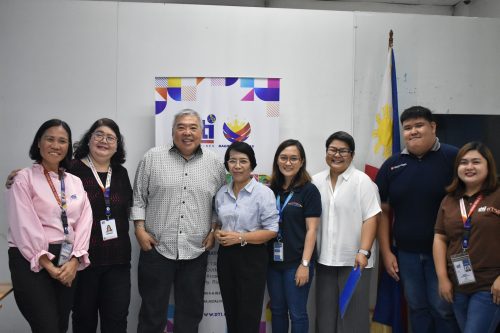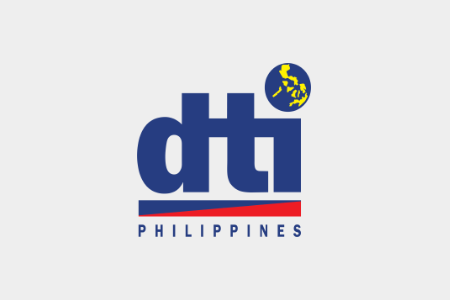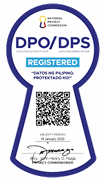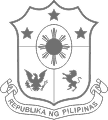Region 1
Posted: August 15, 2016
AboutNewsRegional ProfileMSMEs Success Stories
DTI-1 or DTI-Ilocos Region is composed of four provinces—Ilocos Norte, Ilocos Sur, La Union and Pangasinan; and of nine cities—Alaminos, Batac, Candon, Laoag, San Carlos, San Fernando, Urdaneta, Vigan, and Dagupan.
Economy in the region is anchored both on agriculture and agro-industrial sectors. Its provinces are famous for agro-industrial businesses such as milkfish (bangus) cultivation and processing, livestock raising, fish paste (bagoong) processing, among others. Income in the Ilocos provinces also come from cultivating rice, tobacco, corn, sugarcane, and fruits; and from raising livestock such as pigs, chicken, goats, and carabaos.
ABOUT
Advocating Service Excellence
The Department of Trade & Industry – Region 1 (DTI-Region 1) maintains a strong commitment as the catalyst for intensified private sector activity to accelerate and sustain economic growth and to champion both business and consumers in the region. We endeavor to be an instrument to fight poverty, nurturing industries and MSMEs to generate exports, jobs, investments, and ensuring the protection and empowerment of consumers.
The key factor for an organization’s success is the ability to continuously anticipate changes and stay ahead of others. The DTI-Region 1 has been working hard to institute excellence in the organization thru our Quality Management System (QMS). Our QMS framework puts processes and systems to manage the smooth flow of business transactions and the delivery of services to our clients, as well as, the flexibility to monitor and continually improve performance within the organization.
At DTI-Region 1, our clients come first in everything we do; thus, ensuring utmost customer satisfaction. Our QMS allow us to persistently strive for excellence and afford us to demonstrate our efficiency and effectiveness in delivering our services. This is an initial yet decisive step towards attaining organizational excellence. We shall not be limited by this step, but we shall constantly seek ways to improve the landscape of doing business and protecting consumers.
Above all, our QMS is our answer to the continuing public demand for accountability, improved performance, better governance, transparency and credibility.
History and Mandate
DTI-Region 1 is one of the regional offices of the Department of Trade and Industry under the Regional Operations Group (ROG). Its area of responsibility covers the Ilocos Region compromising the provinces of Ilocos Norte, Ilocos Sur, La Union and Pangasinan.
ROG is one of the Functional Groups (FG) of the DTI) mandated to champion business development and consumer empowerment in the regions. It is tasked to contribute in all the five Major Final Output (MFOs) of DTI:
MFO 1: Trade Development and Promotion;
MFO 2: Industry Development and Investment Promotion, Generation and Facilitation;
MFO 3: Micro, Small and Medium Enterprise (MSME) Development and Promotion;
MFO 4: Consumer Welfare and Protection, and Trade Regulation; and
MFO 5: Good Governance.
Anchored on the Medium-Term Philippine Development Plan (MTRDP), DTI-Region 1 is a catalyst in the fight against poverty in the region by nurturing industries and MSMEs to generate exports, jobs and investments, and ensuring the protection and empowerment of consumers in the process of attaining global competitiveness.
The Mandate:
The Department of Trade and Industry (DTI) is a government body and a service agency created under Executive Order No. 133 on February 27, 1987, reorganizing the Ministry of Trade and Industry, including its attached agencies, and streamlining corresponding functions and responsibilities.
Under this Order, DTI is mandated to serve as a primary coordinative, promotive,regulative and facilitative arm for trade, industry and investment activities in the region. It shall act as the catalyst for intensified private sector activities to accelerate and sustain economic growth and to champion both business and consumers in the region.
The Ilocos Region or Region I (Ilokano: Rehion ti Ilokos, Pangasinan: Rihiyon na Sagor na Baybay na Luzon) of the Philippines is located in the northwestern region portion of Luzon. It is bounded by the Cordillera Administrative Region and Cagayan Valley to the east, Central Luzon to the south and by the South China Sea to the west.
The province of Pangasinan composes 58% of the region’s population, 42% of its area and 61% of its economy.
The region is composed of four provinces, namely: Ilocos Norte, Ilocos Sur, La Union and Pangasinan. Its regional center is San Fernando City, La Union. The Ilocano speaking people compose 66% of the region, the Pangasinan speaking people compose 27%, and the Tagalogs compose 3%.
Physical:
Region I occupies the narrow plain between the Cordillera Central mountain range and the South China Sea. It also occupies the northern portion of the Central Luzon plain, to the north-east of the Zambales Mountains.
Lingayen Gulf is the most notable body of water in the region and it contains a number of islands, including the Hundred Islands National Park. To the north of the region is Luzon Strait.
The Agno river runs through Pangasinan and empties into the Lingayen Gulf. The river flow into a broad delta in the vicinity of Lingayen and Dagupan City.
Demographics:
The Ilocos provinces of the Ilocos Region is the historical homeland of the Ilocanos including Former Philippine President Ferdinand Marcos. The Ilocanos compose 66% of the region, the Pangasinan people compose 27%, and the Tagalogs compose 3%.
Pangasinan is the historical homeland of the Pangasinenses including Former Philippine President Fidel Ramos. The population of Pangasinan comprises approximately 60% of the total population of the region. The Pangasinenses presently constitute around 50% of the population of the province. The Ilocanos were not originally inhabitants of Pangasinan. They started migrating to Pangasinan in the 19th century. Pangasinan was formerly a province of Region III (Central Luzon), but President Marcos signed Presidential Decree No. 1, 1972, incorporating it into Region I. Minority groups include the Tinggian and Isneg communities that inhabit the foothills of the Cordillera mountains.
The population is predominantly Roman Catholic with strong adherents of Protestantism such as the Aglipayan denomination further north of the country. There are also adherents to other Christian denominations, such as Iglesia ni Cristo, Mormons, and the like. There is also an undercurrent of traditional animistic beliefs especially in rural areas. The small mercantile Chinese and Indian communities are primarily Buddhists, Taoists, and Hindus.
Economy:
Although the economy in the southern portion of the region, esp. Pangasinan, is anchored on agro-industrial and service industry, the economy in the northern portion of the region is anchored in the agricultural sector. The economy in Pangasinan is driven by agro-industrial businesses , such as milkfish (bangus) cultivation and processing, livestock raising, fish paste processing (bagoong), and others. At the same time the importance of trading, financial services, and educational services in the economy cannot be denied. Income in the Ilocos provinces or northern portion mostly come from cultivating rice, tobacco, corn, sugarcane, and fruits; raising livestock such as pigs, chicken, goats, and carabaos (water buffalos).
The distribution of the economic activity in the region may be seen from the collection of tax revenue of the national government. The bulk of the collections come from Pangasinan, which posted 61% of the total.
The service and light manufacturing industries are concentrated in the cities. Dagupan City is mostly driven by its local entrepreneurs, which have started to expand its network up to the national level. San Fernando City in La Union also has an active shipping port and Laoag City in Ilocos Norte has an international airport.
The tourism industry, driven by local airlines and land transportation firms in the area like Farinas Transit Company and Partas, focuses on the coastal beaches and on eco-tourism. There are fine sands stretching along Bauang, La Union and the rest of the region. Opportunities to engage in other water sports and activities abound. Eco-tourism takes advantage of the marine and forest resources in the region and displays the natural beauty of the Region 1.
The region is also rich in crafts, with renowned blanket-weaving and pottery.The Ilocanos’ burnay pottery is well known for its dark colored clay.
PROVINCIAL PROFILE
| Ilocos Norte |
Marcos Museum
Batac Parish
San Nicolas Church
Sinking Belltower, Laoag City
Paoay Lake
Fort Ilocandia Hotel
Paoay Golf Course
Paoay Church
Laoag Cathedral
Aglipay Shrine
Malacanang Of The North
Patapat Bridge
Gilbert Bridge
Ilocos Norte Capitol
Cape Bojeador Lighthouse
Bangui Windmills
Ilocos Norte Museum
Juan Luna Shrine
Ricarte Park and Shrine
Badoc Church
Sarrat Church
Dap-ayan, Laoag, Ilocos Norte Food Court and Ilocos Norte Products
La Paz Sandunes, Laoag, Ilocos Norte Fine Sandunes
|
| Ilocos Sur |
Vigan Spanish House
Sinait Church
Ilocos Sur Capitol
Santa Maria Church
Pinsal Falls
|
| La Union |
La Union Capitol
Pindangan Ruins
La Union Botanical Garden
Wallace Air Station
Thunderbird Resort and Casino
La Union Surfing Capital (San Juan)
Bauang Beach
|
| Pangasinan |
Hundred Islands
Pangasinan Capitol
The Shrine of Our Lady of Manaoag
San Carlos City Plaza
San Juan River in San Carlos City
Bonuan Blue Beach in Dagupan City
Antong Falls
Cacupangan Cave
Mount Balungao
Manleluag Spring National Park
Sanctuario de Senor Divino Tesoro
Salasa Church
Lingayen Gulf War Museum
Bolinao Museum
Oceanographic Marine Laboratory
Red Arrow Marker of the WWII 32nd US Infantry Division
Rock Garden Resort
Umbrella Rocks
Urduja House
St. John Cathedral Garden
Caves in Bolinao
Boat ride in Pantal River
Provincial Capitol
Narciso Ramos Sports and Civic Center
Hundred Islands Marine Sanctuary
Tondol Beach
Tambobong White Beach
|
INDUSTRIAL PROFILE
Calamansi
Bangus
Meat Processing
Chichacorn
Veggie Noodle
Information Communication Technology (ICT)
E-bamboo (Engineered Bamboo)























































